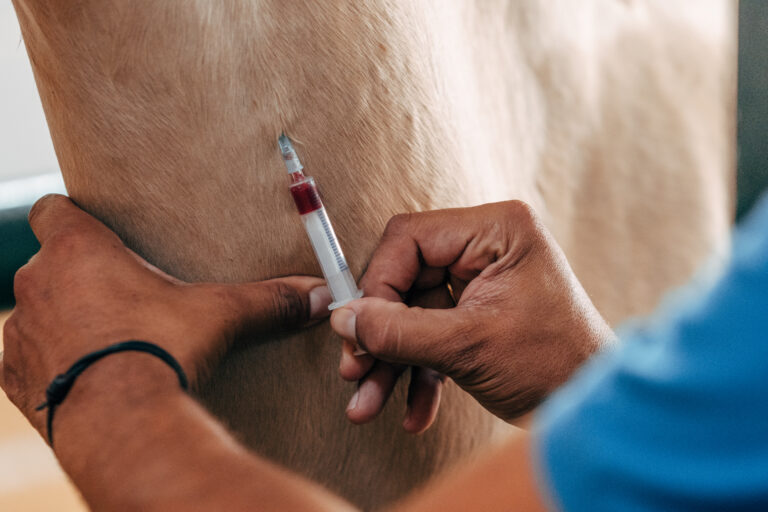
Compensatory vertical head and pelvis movement asymmetry can occur in trotting horses with a primary cause of lameness in one end of the body. This is due to the horse shifting weight between limbs, leading to apparent combined forelimb and hindlimb lameness. Researchers know little about combined forelimb and hind-limb lameness patterns observed with body-mounted inertial sensors. Regardless of their underlying mechanisms, compensatory and secondary lameness can make it more difficult to definitively identify the primary cause of lameness. This retrospective cohort study aimed to determine associations between vertical pelvic movement asymmetry and location of primary lameness in ipsilateral combined forelimb and hindlimb lameness cases where hindlimb lameness is solely impact or push-off type.
Study Population
Researchers identified cases from an equine lameness database that uses a body-mounted inertial sensor system for evaluation. They included horses with a consistent, low-variability ipsilateral impact or ipsilateral push-off hindlimb lameness in a straight-line trot and with a definitive diagnosis. They categorized cases by lameness location to the limb(s), diagnosis, and the ratio of the amplitude of forelimb to hindlimb lameness (Forea/Hinda). The research team used chi-square tests, effect sizes, and odds ratios to analyze differences in the numbers of ipsilateral impact and ipsilateral push-off cases in those categories.
Study Results
In total, 49 ipsilateral impact and 36 ipsilateral push-off cases met the criteria for consistency, low variability, and definitive diagnosis. Ipsilateral impact cases were more likely than ipsilateral push-off cases to have forelimb-only lameness causes when Forea/Hinda was >1 (OR = 43, 95% CI = 2.3–798). Ipsilateral push-off cases were more likely than ipsilateral impact cases to have hindlimb-only causes when Forea/Hinda was >1.0 (OR = 20, 95% CI = 2.2–200) and <1.0 (OR = 14, 95% CI = 2.9–66.7). Compared with ipsilateral impact, ipsilateral push-off cases were more frequently diagnosed with tendon, suspensory ligament, or high-motion joint disorders in hind limbs (OR = 3.6, 95% CI = 1.1–12.3) and less with unknown causes (OR = 13.2, 95% CI = 3.2–75.2). In ipsilateral impact cases, positive forelimb regional anesthesia often reduced hindlimb lameness, whereas in ipsilateral push-off cases, positive hind-limb regional anesthesia typically lessened forelimb lameness.
Bottom Line
The type of pelvic movement asymmetry observed in ipsilateral impact and ipsilateral push-off cases is linked to the location and underlying cause of the primary lameness.
https://beva.onlinelibrary.wiley.com/doi/10.1111/evj.14117
Related Reading
- 10 Radiographic Prepurchase Abnormalities in Sport Horses
- Managing Lumbosacroiliac Joint Region Pain in Horses
- Approach to Horses with Poor Performance
Stay in the know! Sign up for EquiManagement’s FREE weekly newsletters to get the latest equine research, disease alerts, and vet practice updates delivered straight to your inbox.








